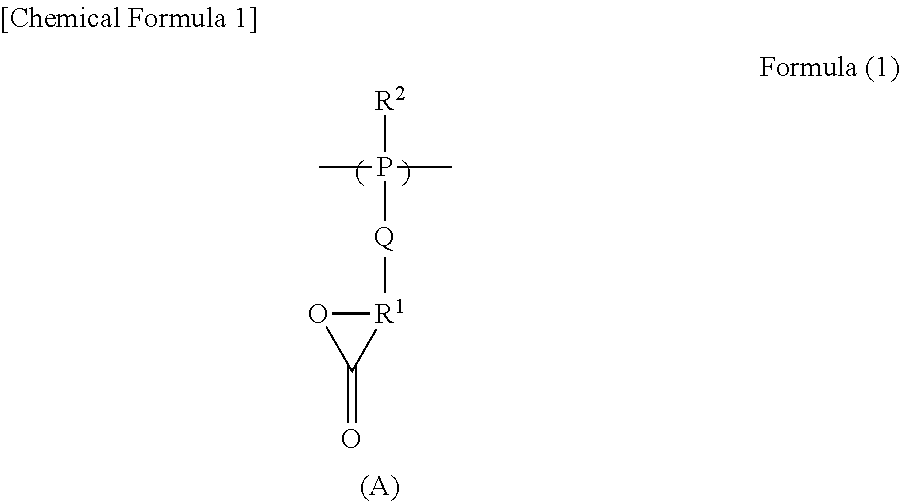Method of producing semiconductor device using resist underlayer film by photo-crosslinking curing
a technology of resist and underlayer film, which is applied in the direction of photosensitive materials, instruments, photomechanical equipment, etc., can solve the problems of difficult application of organic materials, large influence of diffuse reflection of activating light rays from the substrate or the influence of standing waves, and low molecular mass, so as to enhance the homogeneity of the film thickness of a photoresist or the like applied and formed on the substrate, the effect of contamination of peripheral devices
- Summary
- Abstract
- Description
- Claims
- Application Information
AI Technical Summary
Benefits of technology
Problems solved by technology
Method used
Image
Examples
synthesis example 1
[0110]6.6 g (0.039 mol) of butylolactone methacrylate of Formula (3):
[0111]6.6 g (0.046 mol) of hydroxypropyl methacrylate and 6.8 g (0.039 mol) of benzyl methacrylate were dissolved in 64.4 g of tetrahydrofuran and then the inside of a flask was replaced by nitrogen, followed by elevating the temperature of the solution to a reflux temperature. After the start of the reflux, 0.2 g of azobis-isobutylonitrile (AIBN) dissolved in 10 g of tetrahydrofuran was added to the reaction solution under nitrogen pressure and the reaction was effected for 24 hours. The reaction solution was cooled and then charged into diethyl ether, and a polymer was reprecipitated therein. The obtained polymer was dried by heating and a resin of Formula (4) was obtained. The obtained resin had a polymerization degree of 490, a weight average molecular mass Mw of 80,000 (converted into the mass of polystyrene), a molar ratio x:y1:y2 of 31%:38%:31% and a yield of 90%.
example 1
[0112]To 8.0 g of an ethyl lactate solution (solid content concentration: 20.0%) containing 1.6 g of the resin obtained in Synthesis Example 1, 0.4 g of tetramethoxymethyl glycoluryl as a crosslinker and 0.03 g of triphenylsulfonium trifluoromethanesulfonate as a photoacid generator were blended. The resultant reaction mixture was dissolved in 55 g of propyleneglycol monomethyl ether acetate and 6.5 g of ethyl lactate which are reaction solvents to prepare a 10.0% solution. Thereafter, the solution was filtered, first by using a polyethylene-made microfilter having a pore diameter of 0.10 μm, and next by using a polyethylene-made microfilter having a pore diameter of 0.05 μm to prepare a resist underlayer film forming composition.
PUM
| Property | Measurement | Unit |
|---|---|---|
| temperature | aaaaa | aaaaa |
| aspect ratio | aaaaa | aaaaa |
| temperature | aaaaa | aaaaa |
Abstract
Description
Claims
Application Information
 Login to View More
Login to View More - R&D
- Intellectual Property
- Life Sciences
- Materials
- Tech Scout
- Unparalleled Data Quality
- Higher Quality Content
- 60% Fewer Hallucinations
Browse by: Latest US Patents, China's latest patents, Technical Efficacy Thesaurus, Application Domain, Technology Topic, Popular Technical Reports.
© 2025 PatSnap. All rights reserved.Legal|Privacy policy|Modern Slavery Act Transparency Statement|Sitemap|About US| Contact US: help@patsnap.com



